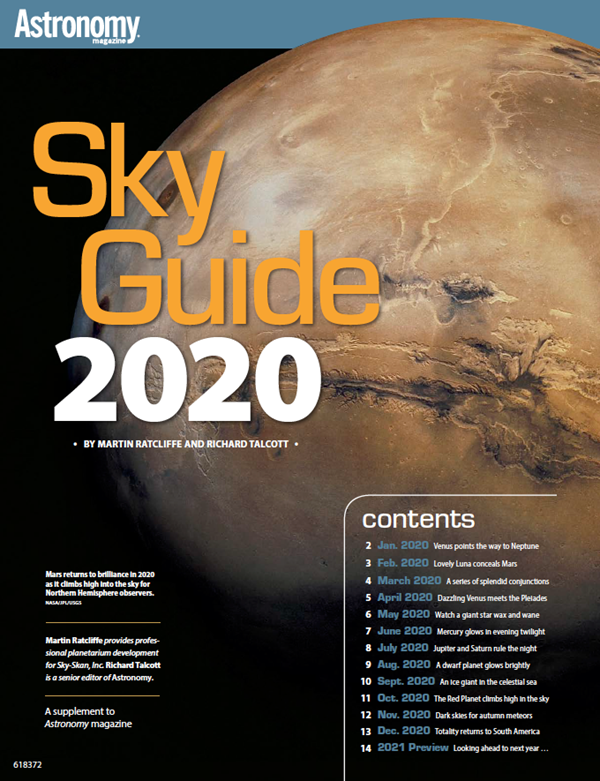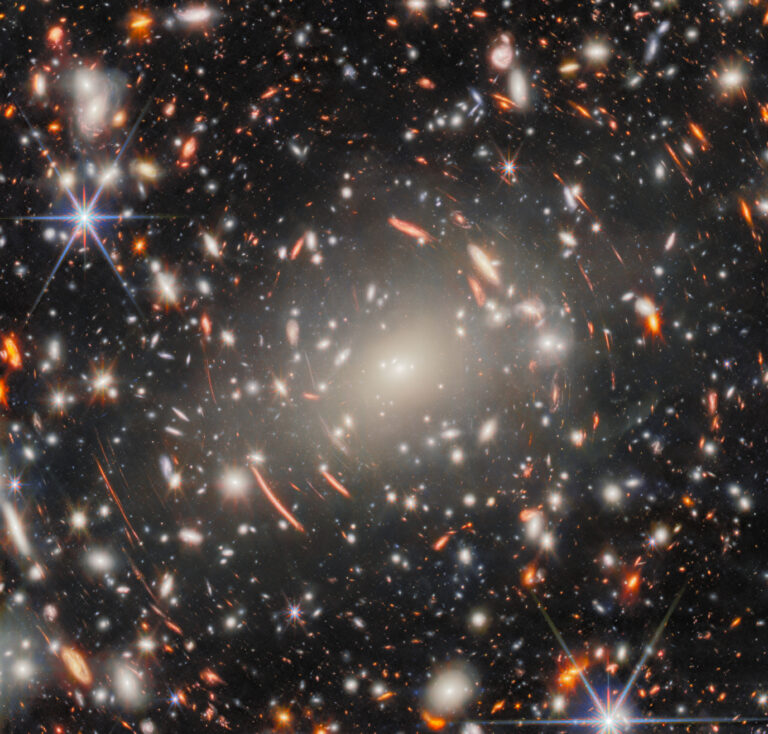
Key Takeaways:

Our exclusive Sky Guide 2020 is now available! This free downloadable pamphlet contains a month-by-month rundown of 2020’s biggest celestial events, from Mars’ best opposition in years to the return of totality in South America this December. Check out Astronomy’s Sky Guide 2020 now!
Less than ½° east and slightly north of the Eyes is a fainter galactic duo. It’s comprised of the elliptical galaxy NGC 4458 (magnitude 11.8; 1.6′ by 1.5′) and its lenticular neighbor NGC 4461 (magnitude 11.1; 3.4′ by 1.4′).
The final members of Markarian’s Chain, NGC 4473 (magnitude 10.2; 4.5′ by 2.5′) and NGC 4477 (magnitude 10.4; 3.7′ by 3.3′), lie across the border in Coma Berenices. The former is yet another elliptical galaxy, while the latter is a barred lenticular galaxy.
Although M84 and M86 are visible in an ordinary 60mm refractor, spotting the rest of the chain will require larger instruments. All can be glimpsed with an 8-inch scope under dark-sky conditions, while an observer with a keen eye might be able to see them with a 6-inch or smaller scope.
Markarian’s Chain is named after the Armenian astrophysicist Benjamin Markarian (1913–1985). However, he didn’t discover these galaxies. That honor goes to Charles Messier, who cataloged M84 and M86 in 1781, and William Herschel, who found the rest of the chain’s members a few years later. Markarian discovered their common motion in the early 1960s.
Visually speaking, Markarian’s Chain is hardly a cosmic masterpiece. Its member galaxies are too far away (an estimated 50 million to 55 million light-years) to appear as much more than fuzzy blobs in most backyard scopes. Still, it’s intriguing to see so many galaxies packed in such a small area of sky. The “wow” factor comes from the realization that the photons stimulating your retinal cells as you gaze into the eyepiece started their journey during the early part of Earth’s Eocene Epoch, just 10 million years after the extinction of the dinosaurs.
Questions, comments, or suggestions? Email me at [email protected]. Next month: We explore the “Fadeaway Star.” Clear skies!
To the passionate deep-sky observer, spring means one thing – galaxies! And nowhere is the number of galaxies greater than in the Virgo Cluster. I featured this galactic swarm in my April 2013 column, but this month, we return to the Virgo Cluster to explore a remarkable group of galaxies within it: Markarian’s Chain.
If your scope has go-to capability, you can arrive at the group by entering the coordinates R.A. 12h27m45.6s, Dec. 13°00’31”. This will take you directly to NGC 4438, which lies near the center of Markarian’s Chain. However, if you opt for this direct route, you’ll miss some of the surrounding scenery. I instead suggest you star-hop from the nearby 5th-magnitude star Rho (ρ) Virginis. Rho serves as an ideal “base camp” because it teams up with three surrounding field stars to form a northwest-pointing arrowhead that quickly establishes field and size orientation. Use an eyepiece that yields a 1° or 2° field of view for the scenic journey.
A nearly straight row of bright Messier galaxies runs from just north of Rho all the way to Markarian’s Chain. From Rho, move 1½° northward to the elliptical galaxies M60 and M59. A slight shift westward will bring the barred spiral M58 into view. A sweep from M60 to M58 and extended an equal distance beyond takes us to the elliptical galaxy M87, whose giant black hole was recently targeted by the Event Horizon Telescope. If we continue the M58-to-M87 route another 1½°, we arrive at the side-by-side ellipticals M84 and M86. They mark the western edge of Markarian’s Chain.
Once you have M84 (magnitude 9.2; 6.5′ by 5.6′) and M86 (magnitude 8.9; 8.9′ by 5.8′) centered in the eyepiece field, gently nudge your scope slightly less than ½° eastward. Here you’ll find the close pair NGC 4435 (magnitude 10.8; 3.0′ by 2.2′) and NGC 4438 (magnitude 10.0; 8.5′ by 3.0′). Because of their visual appearance, they’re nicknamed the Eyes Galaxies. Switch to a higher magnification if you have trouble seeing them.









